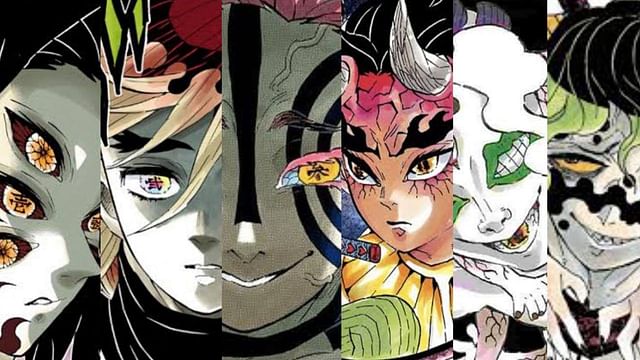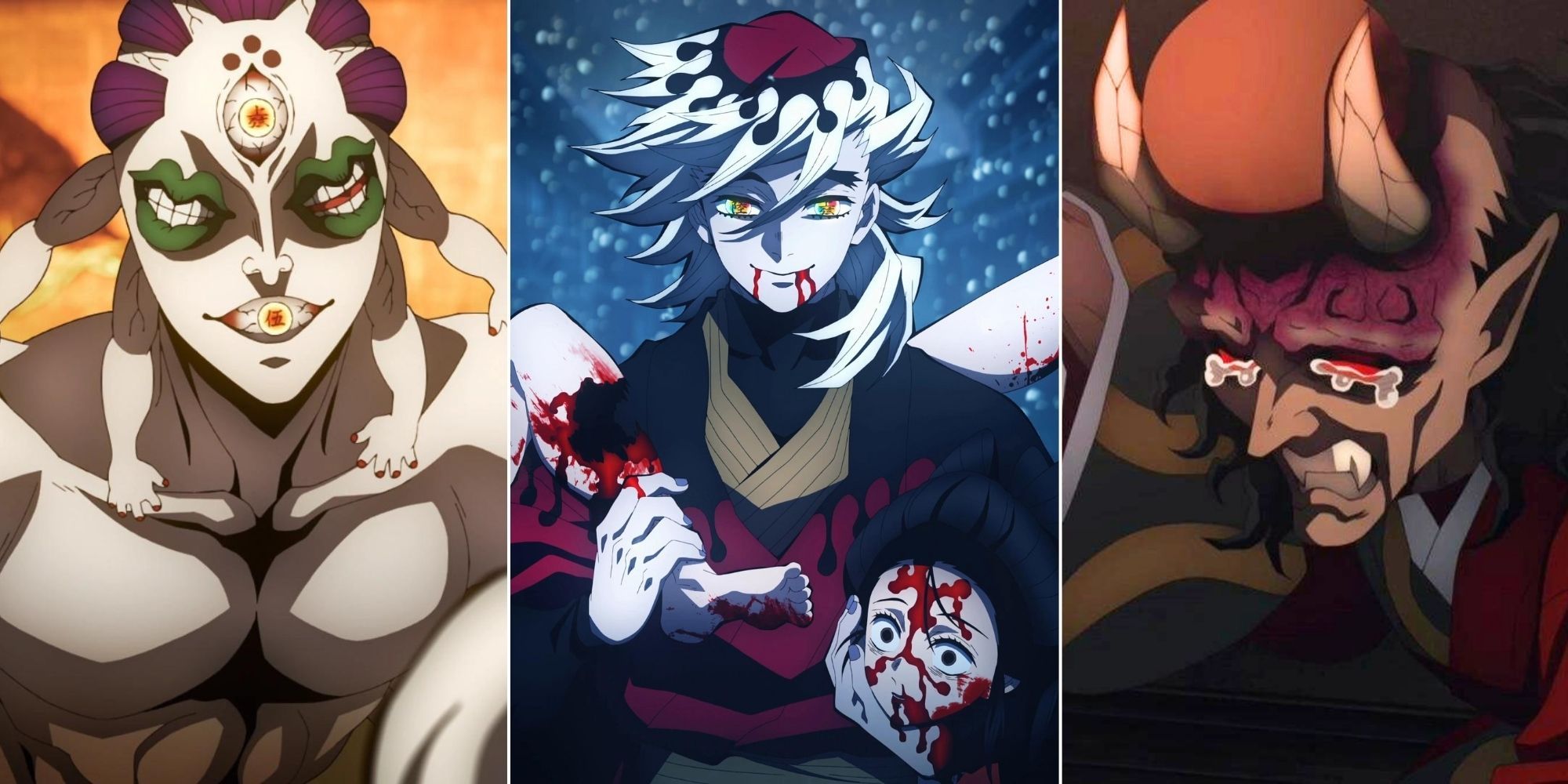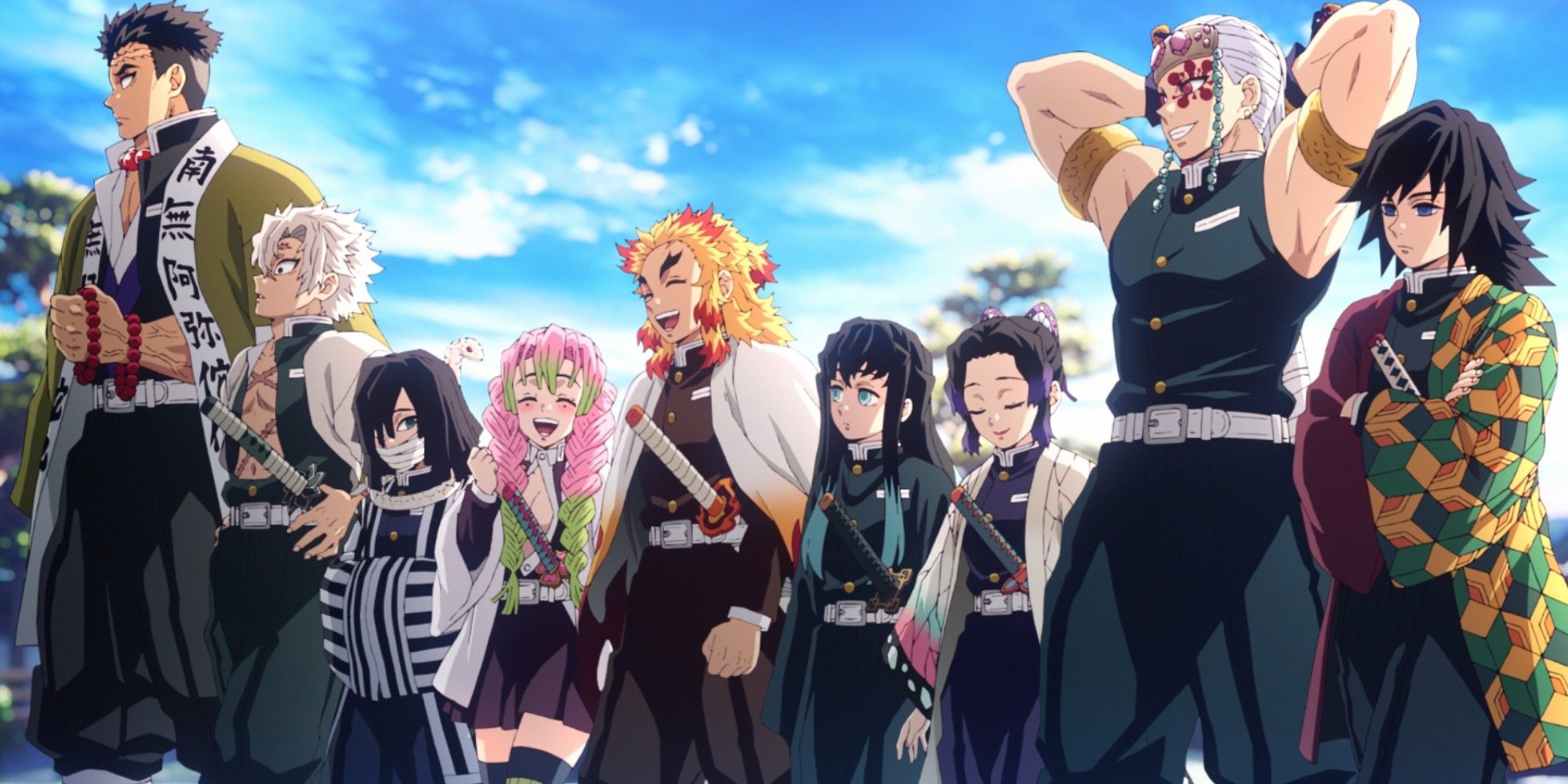Exciting New Releases: ZD Toys Collection & Superman Collection
Exciting New Releases: ZD Toys Collection & Superman Collection

Infinity Castle Breakdown: What Makes the Twelve Kizuki So Terrifying?
July 24, 2025 4 min read
As Demon Slayer: Infinity Castle (Part 1) brings us to the climactic battles, it's the perfect time to explore the terrifying hierarchy that has shaped the series' greatest conflicts.
The world of Demon Slayer operates on a brutal system of power and rank, nowhere more evident than in Muzan Kibutsuji's carefully constructed demon hierarchy. At the apex of this terrifying pyramid sit the Twelve Kizuki—the most powerful demons under Muzan's command, divided into Upper and Lower Moons based on their strength and utility to their master.
The Twelve Kizuki System

Muzan's ranking system serves multiple purposes beyond simple organization. Each demon's number, etched into their eyes, represents not just power level but their value to Muzan's ultimate goal of conquering the sun. The Lower Moons (Seven through Twelve) and Upper Moons (One through Six) exist in a constant state of competition, fear, and ambition—exactly as Muzan intends.
This hierarchy reflects Muzan's psychology: his need for absolute control, his paranoia about betrayal, and his ruthless pragmatism. By pitting his strongest servants against each other, he ensures their loyalty through fear while maintaining his position as the unquestionable apex predator.
The Upper Moons: Centuries of Terror

What makes the Upper Moons particularly terrifying isn't just their strength—it's their longevity. Unlike the frequently replaced Lower Moons, the Upper Moons have held their positions for decades, even centuries. This stability speaks to their overwhelming power and their understanding of how to survive under Muzan's volatile rule.
Each Upper Moon we've encountered represents a different aspect of demonic corruption. They're not simply monsters—they're tragic figures whose humanity has been twisted into something unrecognizable, yet traces of their former selves remain, making them both sympathetic and horrifying.
Upper Moon Six - Daki and Gyutaro: The Entertainment District arc revealed how the Upper Moons embody both individual trauma and collective strength. Their shared rank demonstrated that power in Muzan's hierarchy isn't always about a single overwhelming force—sometimes it's about perfect, deadly cooperation born from genuine love and mutual dependence.
Upper Moon Three - Akaza: Perhaps no Upper Moon better represents the series' central themes than Akaza. His obsession with strength and his refusal to harm women hint at the human values that persist even in demonhood. His battles showcase how the Upper Moons aren't just obstacles to overcome—they're mirrors reflecting what the protagonists could become under different circumstances.
Upper Moon Two - Doma: The contrast between Doma's cheerful demeanor and his complete lack of empathy illustrates how demons can lose their humanity in ways that go beyond mere physical transformation. His existence challenges our understanding of what constitutes a truly monstrous individual.
The Hashira's Greatest Challenge

The Upper Moons represent the ultimate test for the Demon Slayer Corps' strongest members. Throughout the series, we've seen how even seasoned Hashira struggle against these opponents. The Entertainment District arc showed us that defeating even one Upper Moon requires multiple Hashira working in perfect coordination, along with considerable sacrifice and luck.
This power disparity serves the story's themes beautifully. The Hashira, despite their incredible skills and dedication, remain fundamentally human. They tire, they bleed, they doubt themselves. The Upper Moons, having abandoned their humanity, possess advantages that pure skill cannot always overcome.
Yet this is precisely what makes the Hashira's victories so meaningful. When they triumph, it's not through becoming monsters themselves, but by embracing the very qualities that make them human: their bonds with others, their willingness to sacrifice for strangers, and their refusal to abandon their principles even in the face of certain death.
Muzan's Vision Realized

The Upper Moons exist as extensions of Muzan's will, but they also represent his fundamental misunderstanding of strength. Muzan believes power comes from abandoning weakness—human emotions, connections, and moral limitations. The Upper Moons are his proof of concept, demons who have traded their humanity for incredible abilities.
However, the series consistently shows us that this trade-off isn't as beneficial as Muzan believes. The Upper Moons' greatest moments of strength often come not from their demonic abilities, but from the human emotions they've retained. Their defeats frequently result from their inability to fully abandon their human nature, suggesting that Muzan's philosophy is fundamentally flawed.
The Final Confrontation Awaits
As we enter the Infinity Castle arc, the significance of the Upper Moons becomes even more apparent. They represent not just obstacles to overcome, but the culmination of everything the series has been building toward. Each remaining Upper Moon embodies different aspects of the central conflict between human nature and monstrous power.
The hierarchy that once seemed so imposing and permanent is finally being challenged by opponents who understand that true strength comes not from abandoning humanity but from embracing it fully. The Demon Slayer Corps has learned that defeating the Upper Moons isn't about becoming stronger than them—it's about remaining human while fighting monsters.
As the final battles unfold, the question isn't just whether our heroes can defeat these powerful foes, but whether they can do so without losing the very qualities that make them worth fighting for. The Upper Moons, in all their tragic horror, serve as a constant reminder of what's at stake: not just individual lives, but the preservation of human compassion in a world that seems determined to destroy it.
The hierarchy of demons may have ruled through fear and power for centuries, but the bonds forged through shared humanity and sacrifice are proving to be the stronger force. In the end, that may be the Upper Moons' greatest significance—not as examples of ultimate power, but as proof that power without humanity is ultimately hollow.
Anime lovers, visit Superhero Toystore and explore our stunning new range of Fantastic Four and Marvel collectibles—crafted for true fans!
Subscribe
Sign up to get the latest on sales, new releases and more …
